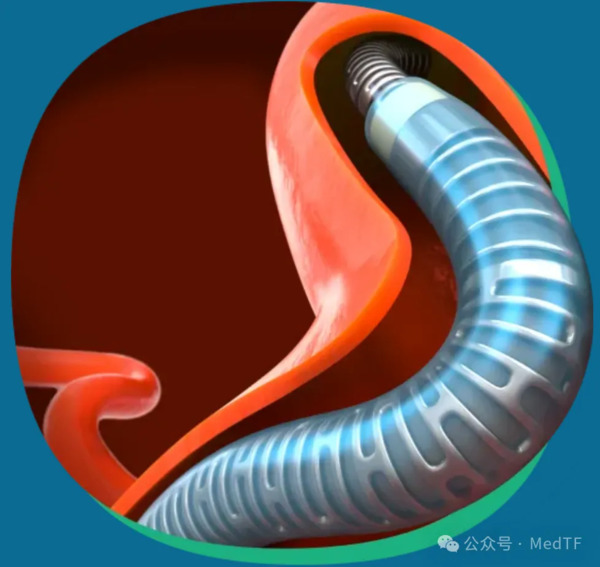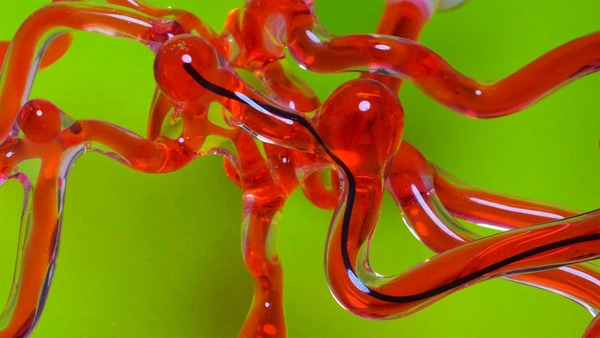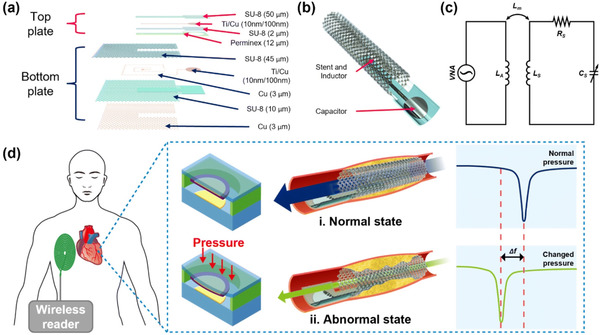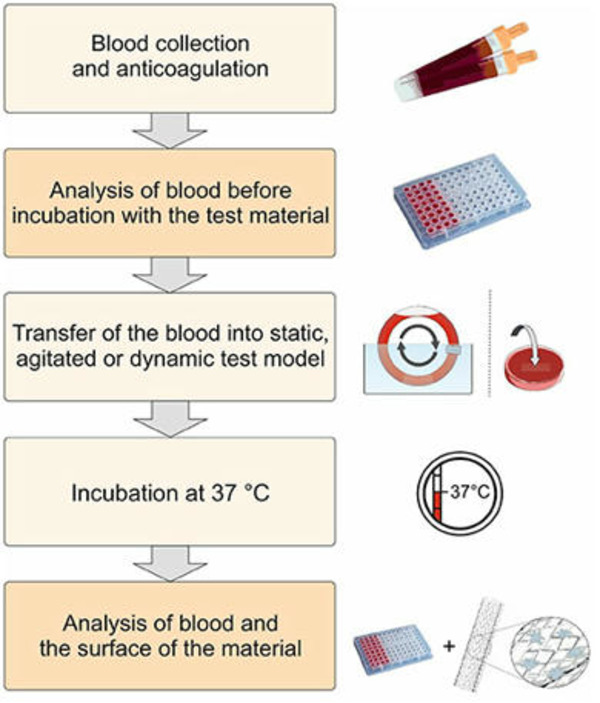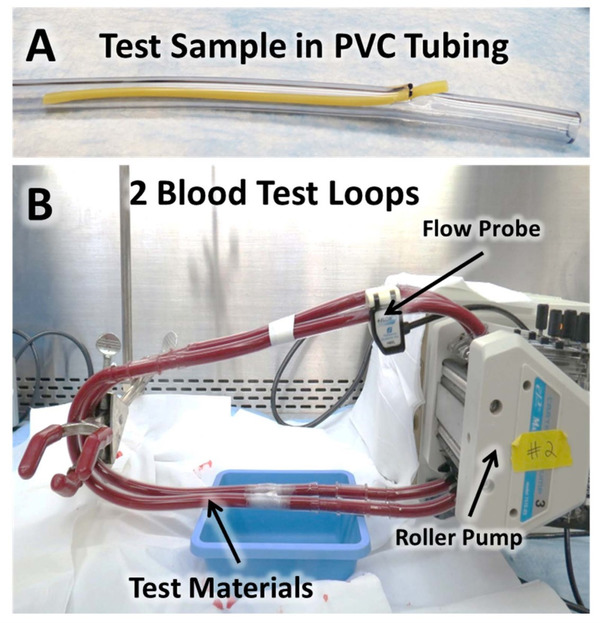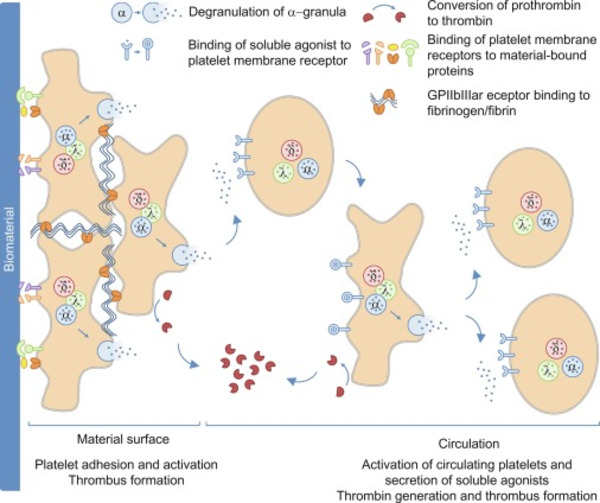 Your new post is loading...

|
Scooped by
Beeyond
|
Cardiovascular diseases remain the leading cause of death worldwide, with ischemic heart disease (IHD) as the most common. Ischemia-induced angiogenesis is a process in which vascular endothelial growth factor (VEGF) plays a crucial role. To conduct research in the field of VEGF’s association in cardiovascular diseases, it is vital to understand its role in the physiological and pathological processes in the heart. VEGF-based therapies have demonstrated a promising role in preclinical studies. However, their potential in human therapies is currently under discussion. Furthermore, VEGF is considered a potential biomarker for collateral circulation assessment and heart failure (HF) mortality. Additionally, as VEGF is involved in angiogenesis, there is a need to elucidate the impact of VEGF-targeted therapies in terms of cardiovascular side effects.

|
Scooped by
Beeyond
|
Proceeds from the financing will be used to support the clinical and regulatory development of CereVasc's eShunt System, including its upcoming STRIDE pivotal study in patients with Normal Pressure Hydrocephalus. STRIDE is a multi-center, randomized controlled trial that will assess the safety and efficacy of the eShunt System compared to the current standard-of-care ventriculo-peritoneal (VP) shunt and serve as the basis for a future Premarket Approval (PMA) submission to the FDA.

|
Scooped by
Beeyond
|
Scientia Vascular chief commercial officer Paul Fischer said: “We’ve seen what microfabrication can do in products like our Aristotle 24 and Colossus wires in changing the standard of care for patient treatment in stroke, so it’s rewarding to see the excitement and buzz surrounding microfabricated technology in catheters with our physician community.

|
Scooped by
Beeyond
|
Route 92 Medical Inc. is recalling specific lots of Route 92 Medical products containing the Tenzing 7 Delivery Catheters due to multiple instances of distal tip separation at the proximal marker band. The catheters that deconstructed were not manufactured by Route 92 Medical but by an outside contract supplier. Additional investigations determined that some of these catheters manufactured by this outside supplier did not meet Route 92 Medical’s quality standards particularly in the area of the proximal marker band, so a voluntary recall was initiated.

|
Scooped by
Beeyond
|
The reason for the unrivaled flexibility and stability of Plato 17 is the unique micro-machining technology used in Plato 17. Plato 17 has thousands of transition zones to ensure a seamless flexibility gradient: a continuous transition flexibility profile designed to prevent prolapse from selected vessels.Plato 17's unique design: using intricately machined rings and beams on a nickel-titanium tubing (think of it as a 160cm-long nickel-titanium scaffold), a near one-to-one push response is achieved by directly pushing the transition from the proximal to the distal end. This not only prevents kinking, but also helps maintain lumen integrity even in challenging vessels. In sharp contrast, conventional braided and coiled devices tend to accumulate energy, leading to instability and unpredictability

|
Scooped by
Beeyond
|
Although from a commercial point of view coil and Onyx remain the main agents used in clinical practice, it has been observed that in some circumstances they do not guarantee adequate safety and feasibility profiles to maintain human health unaltered. In fact, side effects often occur related to the ease of aggregation, off-target embolisation, collateral circulation, migration and compaction of the spirals, or the presence of solvents such as DMSO (in the case of Onyx), which cause a significant response inflammatory in patients. For this reason, in recent years, scientific research has led to the development of new biomaterials capable of satisfying the growing clinical demands of minimally invasive endovascular embolisation. A variety of embolic materials have been gradually developed, and more research interests have focused on the development of intelligent and/or multifunctional materials. An example is given by embolic agents based on hydrogels, biomaterials of natural or synthetic origin, which are easily customizable with favourable properties and wide versatility.

|
Scooped by
Beeyond
|
CERENOVUS, part of Johnson & Johnson MedTech, has launched CEREGLIDE 71 Aspiration Catheter in Europe, an aspiration catheter equipped with TruCourse technology, indicated for the revascularisation of patients suffering from acute ischemic stroke.

|
Scooped by
Beeyond
|
MIT engineers have developed a magnetically steerable, thread-like robot that can actively glide through narrow, winding pathways, such as the labrynthine vasculature of the brain.

|
Scooped by
Beeyond
|
These findings suggest that low LDL-C levels are associated with an increased bleeding risk within 3 months among patients with minor ischemic stroke or high-risk transient ischemic attack who are receiving dual antiplatelet therapy, especially those taking ticagrelor-aspirin.

|
Scooped by
Beeyond
|
Deployed in the correct manner, future BCIs have the potential to enable their users to control computers with their thoughts after loss of function. This could be life-changing for millions of patients with conditions such as locked-in syndrome, amyotrophic lateral sclerosis (ALS), or tetraplegia. Clinical research and testing of devices for various conditionsopens in a new tab or window is ongoing, and several companiesopens in a new tab or window have made significant stridesopens in a new tab or window to bring these devicesopens in a new tab or window toward commercialization and reaching patients.

|
Scooped by
Beeyond
|
The preliminary findings confirmed the proposed smart stent's higher level of structural integrity, durability and repeatability. Finally, the practical feasibility of the smart stent is demonstrated by monitoring diastole and systole at various beat rates using a phantom. The results of the phantom study showed a similar pattern to the human model, indicating the potential use of the proposed multifunctional smart stent for real-time applications.

|
Scooped by
Beeyond
|
The interaction of biomaterials with blood leads to cellular as well as humoral reactions, which can result in an unwanted inflammation and activation of coagulation and/or fibrinolysis. Thus, the development of biomaterials with an improved hemocompatibility increases the tolerability and minimizes unwanted side effects, such as thrombus formation. Therefore, during the development of new blood-contacting medical devices, not only the mechanical and chemical characteristics should play an important role, but also the hemocompatibility. Furthermore, to prove the safety and reliability of new products, hemocompatibility analyses should include appropriate references and follow the ISO 10993-4 standard.

|
Scooped by
Beeyond
|
There is currently no standardized test method for in vitro dynamic thrombogenicity assessment of medical devices and biomaterials. This tool will effectively enable users to differentiate device materials with different thrombogenic potentials against standard negative and positive control materials and a marketed comparator device with known thrombogenicity profile.

|
Scooped by
Beeyond
|
These results demonstrated that multiple animal blood sources (particularly donor ovine and bovine blood) may be suitable alternatives to fresh human blood for dynamic thrombogenicity testing when appropriate control materials and donor-specific anticoagulation levels are used.

|
Scooped by
Beeyond
|
To evaluate the use of the large language models (LLMs) GPT-4 and GPT-3.5 to extract data from neuroradiology reports on mechanical thrombectomy in patients with ischemic stroke.

|
Scooped by
Beeyond
|
Since February 2005 when NMPA (then CFDA) published the first batch of medical device clinical sites, a total of 1380 hospitals became certified to conduct clinical research in China as of April 2024. All 1380 sites have different clinical specialties registered with NMPA. We can help you select the right hospital and save time for market introduction.

|
Scooped by
Beeyond
|
In ICAS surgical treatment, when the anterior-posterior diameter difference of the diseased vessel is found to be small and the vessel segment is relatively straight, we can effectively utilize the NOVA® Intracranial Drug-Eluting Stent with the intermediate catheter in place. The use of the NOVA® Intracranial Drug Eluting Stent can significantly simplify the surgical process, reduce the difficulty of the operation, and thus effectively minimize the complications that may arise during the operation. This strategy not only improves the safety of the operation, but also enhances the patient's recovery

|
Scooped by
Beeyond
|
In the US between 1990 and 2019, age-standardized stroke rates have decreased, however, the rates of absolute burden and hemorrhagic stroke have increased.

|
Scooped by
Beeyond
|
In this prospective, single-arm study, SAC embolization of unruptured distal ICA aneurysms using the modified Alpha stent has exhibited excellent results regarding safety and efficacy. However, radiologic follow-up by TOF-MRA demonstrated suboptimal visualization of in-stent flow. Further studies on its use in various locations with long-term clinical and radiological data are necessary.

|
Scooped by
Beeyond
|
Replacing aspirin with indobufen in the dual antiplatelet (DAPT) regimen for patients without elevated cardiac troponin after successful drug-eluting stent implantation results in a lower risk of 1-year net clinical outcomes, a difference driven by nonserious bleeding events, according to the randomized OPTION trial.

|
Scooped by
Beeyond
|
Stents are usually placed in the carotid arteries, which are the main arteries that supply blood to the brain. When the carotid arteries become narrowed, there is a risk of stroke due to the reduced blood supply. Intracranial stenosis stents help restore normal blood flow to the brain by opening up the narrowed artery.

|
Scooped by
Beeyond
|
This review highlights the crucial role that clinical imaging plays in unraveling the complex molecular mechanisms that underlie ischemic stroke. Techniques such as CT, MRI, and fluorescence imaging provide invaluable insights into the progression of stroke and the identification of potential therapeutic targets. Moreover, the advancements in radiopharmaceuticals and experimental models offer promising avenues for further exploration. By integrating molecular events with imaging modalities, this interdisciplinary approach enhances our understanding of ischemic stroke and holds significant implications for future research and clinical interventions. Ultimately, this approach aims to improve patient outcomes in this debilitating condition.

|
Scooped by
Beeyond
|
Ischemic stroke is caused primarily by an interruption in cerebral blood flow, which induces severe neural injuries, and is one of the leading causes of death and disability worldwide. Thus, it is of great necessity to further detailly elucidate the mechanisms of ischemic stroke and find out new therapies against the disease. In recent years, efforts have been made to understand the pathophysiology of ischemic stroke, including cellular excitotoxicity, oxidative stress, cell death processes, and neuroinflammation. In the meantime, a plethora of signaling pathways, either detrimental or neuroprotective, are also highly involved in the forementioned pathophysiology. These pathways are closely intertwined and form a complex signaling network.

|
Scooped by
Beeyond
|
The world's first self-expanding intracranial drug-coated stent system, called COMETIU™, complements the NOVA® Intracranial Drug-Eluting Stent System with its safety and non-neurotoxicity, reduced risk of in-stent restenosis and stroke recurrence, improved procedural safety in the area of the richly branched stent, access to the tortuous vessels, and ease of operation.

|
Scooped by
Beeyond
|
The introduction of endovascular thrombectomy dramatically changed acute stroke management and became the standard treatment. Balloon guide catheters provide flow arrest during the clot retrieval process and have several advantages.This study aimed to compare balloon guide catheters (BGCs) versus non-balloon guide catheters (NBGCs) as a part of a combined treatment modality in patients presenting with acute ischemic stroke.
|

Curated by Beeyond
BEEYOND is a consulting company in the field of disruptive innovation, accompanying established companies on out-of-the-core growth strategy, from creation of new concepts to product launch. Reach us at: contact@beeyond.fr.
|

 Your new post is loading...
Your new post is loading...






